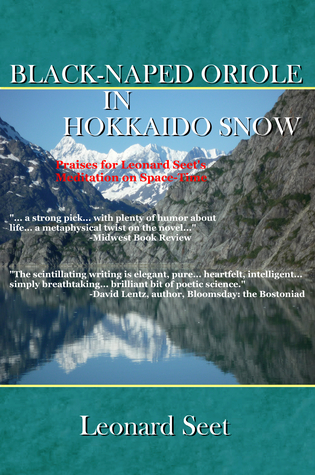
Black-Naped Oriole in Hokkaido Snow
Book Description
A burst of vibrant yellow against a stark white canvas, the Black-Naped Oriole navigates the frozen landscapes of Hokkaido, embodying resilience in a world gripped by winter's icy clutch. As the seasons shift, their migration becomes a perilous journey marked by predators and climate chaos. Amidst the snow, unexpected alliances form, revealing the intricate web of life and survival that threads through the harshest environments. Each flutter of wings resonates with unspoken stories of perseverance and hope. Can this enchanting creature find its way home before the last flake melts away?
Quick Book Summary
"Black-Naped Oriole in Hokkaido Snow" is a nonfiction collection of lyrical short stories that explores the journey of a striking yellow oriole against the snowy, white backdrops of Hokkaido. Through its migration across frozen lands, readers witness powerful themes of resilience, adaptation, and the unforeseen connections between creatures surviving in harsh environments. With predators lurking and the threat of climate chaos looming, the oriole's flight through winter's grasp becomes emblematic of hope and perseverance. The stories invite reflection on the fragility and determination of life, as well as the quiet heroism in brave, daily survival. Leonard Seet’s narratives elevate the oriole's odyssey into a universal testament to the endurance of nature and the unexpected bonds formed in adversity.
Summary of Key Ideas
Table of Contents
Migration as a Test of Resilience
The Black-Naped Oriole’s journey begins in the depths of a harsh Hokkaido winter. The bird’s bright yellow plumage starkly contrasts the blanketing snow, symbolizing a spark of life determined to survive against the odds. Leonard Seet uses vivid imagery to convey the tension between vibrant existence and the icy stillness around it. The initial stories focus on the oriole’s daily struggle for food, warmth, and safety, offering a close look at the minute decisions and instincts required to endure a frozen world. This setting draws readers into an atmosphere where survival is never guaranteed, and every small victory is hard-won.
Adaptation and Survival in Hostile Environments
Resilience emerges as a core theme, illustrated through the oriole’s relentless resolve to continue its migration despite the omnipresent threats of predators and severe weather. The narrative immerses the reader in the oriole’s hesitation at taking flight and the renewed vigor each morning brings. Seet deftly explores how the harsh climate forces the oriole to stretch its physical and mental limits, highlighting the parallels between the struggles of wildlife and the persistence found in human experience. This resilience is not just physical but emotional—the oriole’s instinctual drive to return home underscores a universal longing for belonging and safety.
Climate Change and Its Impact on Wildlife
Adaptation is shown through the oriole’s interaction with Hokkaido’s unique ecosystem and other animal inhabitants. As food becomes scarce, the oriole learns to identify unconventional sources of nourishment and adapts its behaviors to avoid predators. Unlikely partnerships form as the story unfolds, such as moments when birds of different species act in concert to ward off mutual dangers. These alliances, often born from desperation, underline the intricate web of life in a winter landscape, demonstrating that survival frequently depends upon collaboration as much as competition.
Unexpected Alliances and Interconnectedness
Among the most pressing dangers is the looming threat of climate chaos. The stories weave in subtle observations—unseasonal storms, shifting migratory patterns, and changes in the availability of food—that hint at the larger crisis facing all wildlife. Seet invites readers to reflect on the resilience required not just by one bird, but by entire species confronting an uncertain future impacted by human activity. The passages make clear that migration itself has become increasingly perilous, deepening the book’s urgency and relevance.
Hope and Perseverance Amidst Adversity
The collection closes on notes of hope and quiet triumph. Despite mounting odds, the oriole’s journey becomes a symbol of perseverance and renewal. Each of the bird’s actions, from foraging to resting, reveals an unspoken optimism—an innate belief in the possibility of survival and finding home. Seet’s prose lingers on those fleeting moments of warmth and camaraderie, capturing the beauty and fragility of life woven through the chill of winter. Through the oriole’s story, readers are prompted to celebrate resilience and the delicate, powerful connections that sustain life amidst adversity.
Download This Summary
Get a free PDF of this summary instantly — no email required.





